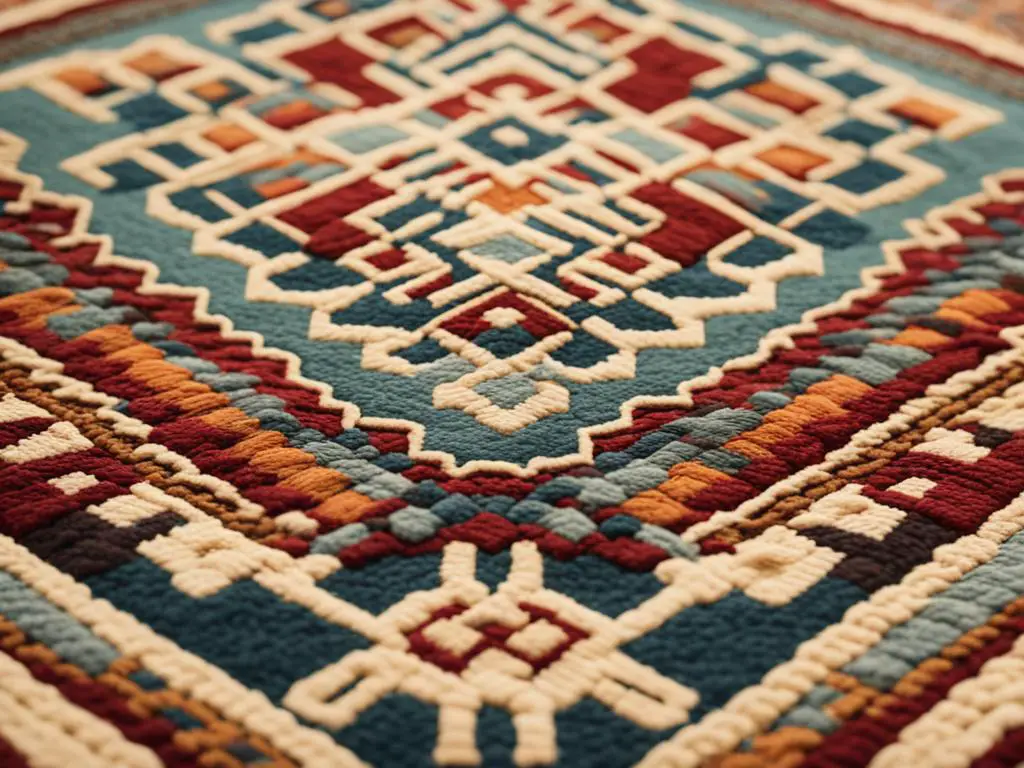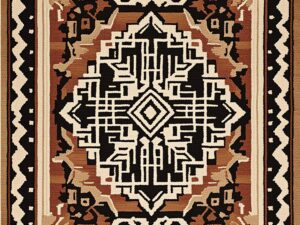Knot count, also known as knot density, is an important factor in determining the quality of a hand-knotted rug. The knot count refers to the number of hand-tied knots within a certain area of the rug. When it comes to knot count, the higher the number, the better the quality of the rug.
The knot count is typically measured in knots per square inch (KPSI), which is the total number of knots within a 1-inch by 1-inch area. However, it’s important to note that knot count alone is not the sole indicator of rug quality. Other factors, such as the materials used, design, and construction, also play a significant role in determining rug quality. It’s essential to consider knot count in conjunction with these other factors.
Key Takeaways:
- A higher knot count indicates better craftsmanship and quality in a hand-knotted rug.
- Knot count is measured in knots per square inch (KPSI).
- Consider knot count along with factors like materials, design, and construction when determining rug quality.
- Knot count alone should not be the sole determining factor in purchasing a rug.
- Choose a rug that you love and that fits your personal aesthetic and design preferences.
How to Determine Knots Per Square Inch
To accurately determine the knot count or knots per square inch (KPSI) of a rug, you can follow these simple steps:
-
First, turn the rug over so that the backside is facing up.
-
Next, mark out a 1-inch by 1-inch square area on the rug.
-
Count the number of knots across the width of the square.
-
Then, count the number of knots along the length of the square.
-
Multiply the two numbers together to get the KPSI of the rug.
By following this method, you can easily calculate the knot count of a rug on your own. It’s a straightforward and practical way to determine the rug’s knotting density and assess its quality.
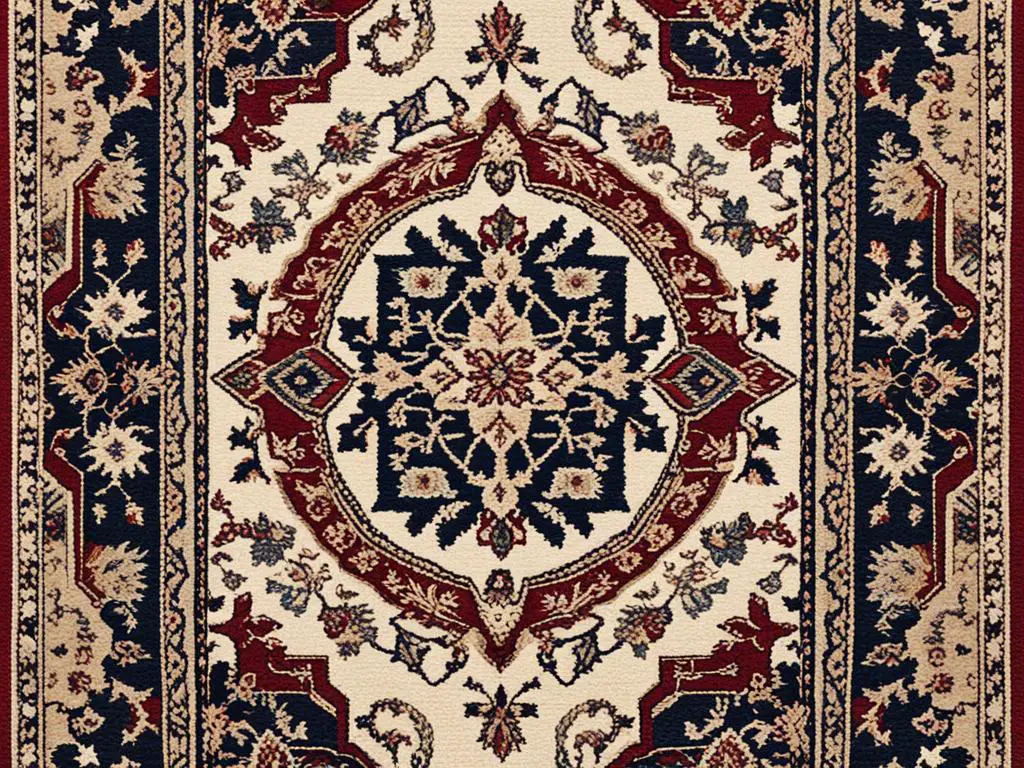
Rug knotting density is an essential factor in evaluating a rug’s craftsmanship and overall value. By understanding how to determine knots per square inch, you gain valuable insights into the intricacy and quality of a hand-knotted rug.
The Importance of Knot Count in Rug Pricing
Knot count plays a significant role in determining the price of Oriental rugs. Rugs with higher knot counts are generally more expensive due to the time and skill required to tie a greater number of knots. However, it’s important to note that knot count alone is not the sole determinant of rug value. Other factors such as the materials used, design intricacy, and overall appeal also contribute to the price of a rug. When considering a rug for purchase, it’s crucial to take all these factors into account and not base your buying decision solely on knot count.
“While knot count is an important consideration, it should not be the sole determining factor in rug pricing. It’s essential to assess all aspects of the rug’s construction, materials, and design to make an informed purchasing decision.”
Factors Affecting Rug Pricing
When determining the value of a rug, the following factors should be considered:
- Materials: The quality of the materials used in the rug, such as the type of wool or silk, can significantly impact its price.
- Design Intricacy: Rugs with complex and intricate designs typically require more time and skill to create, which can increase their cost.
- Overall Appeal: The aesthetic appeal and visual impact of a rug also contribute to its value. Unique and visually striking designs may command a higher price.
Notable Rug Knot Counts and Their Impact
Here are some examples of knot counts and their impact on rug pricing:
| Knots per Square Inch (KPSI) | Price Range | Description |
|---|---|---|
| 50-100 KPSI | Low | Rugs with lower knot counts are generally less expensive and may feature simpler designs. |
| 100-200 KPSI | Mid-range | Rugs with moderate knot counts offer a good balance between affordability and detail in the design. |
| 200 and above KPSI | High | Rugs with higher knot counts are considered more luxurious and often feature intricate patterns and designs. |
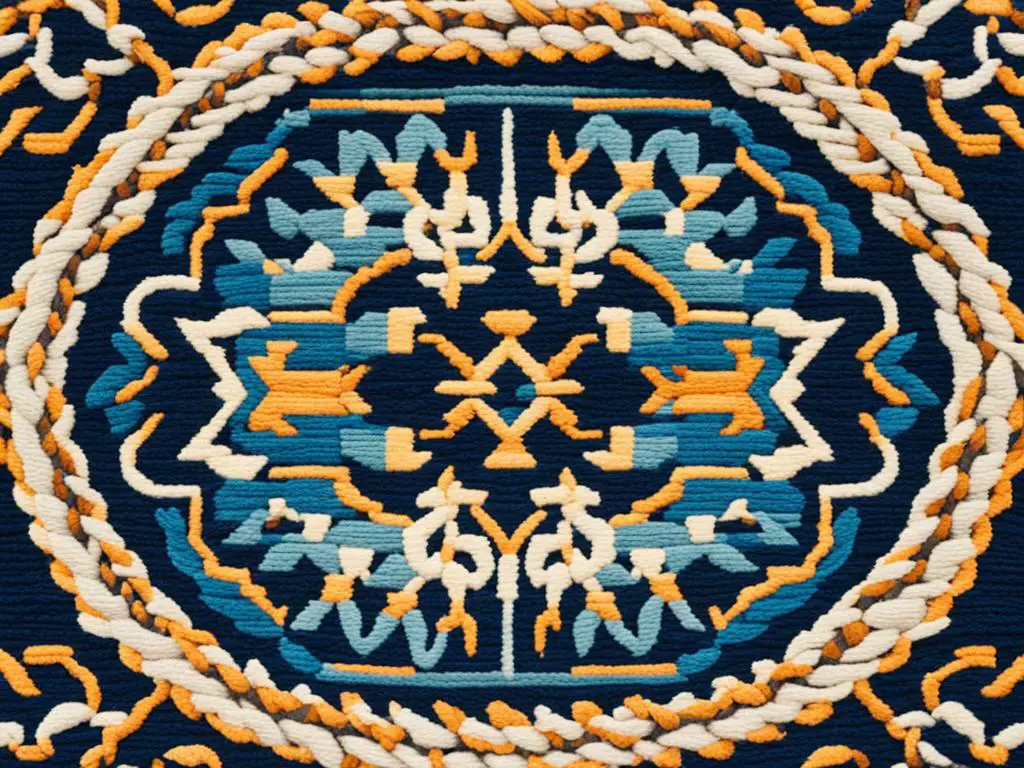
Knot Count as a Measure of Rug Detail and Origin
Knot count plays a significant role in assessing the level of detail and intricacy in the design of a hand-knotted rug. Finer rugs with higher knot counts allow for more intricate and curvilinear patterns, showcasing the skill and artistry of the weaver. These rugs often feature delicate motifs and fine lines that create a visually stunning effect. On the other hand, rugs with lower knot counts tend to have simpler geometric designs, which can also be appealing in their own right.
The knot count can also provide insights into the origin of a rug. Rugs with higher knot counts are commonly produced in city environments, where sedentary weavers focus on creating rugs for sale. The urban setting allows for more time and resources to be dedicated to achieving a higher level of knot density and intricate designs. In contrast, rugs with lower knot counts are often crafted by nomadic tribal groups primarily for their own use, reflecting their cultural heritage and design sensibilities.
Rug Knotting Techniques
Various rug knotting techniques are employed by weavers to achieve different knot densities. Some common rug knotting techniques include:
- Persian Knot: Also known as the Senneh knot or asymmetrical knot, this technique is widely used in Persian and Oriental rugs. It is created by passing the yarn around one warp thread and then under the next, forming a single knot.
- Turkish Knot: Also referred to as the Ghiordes knot or symmetrical knot, this technique is commonly found in Turkish and Caucasian rugs. It involves wrapping the yarn around two adjacent warp threads and then pulling it back through the middle.
- Jufti Knot: This technique involves tying the knot around four warp threads instead of two, reducing the time required to complete the rug but resulting in a lower knot count.
These techniques, among others, allow weavers to create rugs with varying knot densities and achieve different levels of detail in the design.
Rug Knotting Density Standards
While there are no strict industry-wide standards for rug knotting density, there are general guidelines that can help assess the quality of a rug. Higher knot counts are typically associated with finer rugs and are considered a sign of superior craftsmanship. However, it’s essential to consider the overall construction, materials used, and design intricacy in conjunction with the knot count to get a comprehensive understanding of the rug’s quality.
| Knot Density | Rug Quality |
|---|---|
| Less than 100 knots per square inch | Low-quality rug |
| 100 – 200 knots per square inch | Moderate-quality rug |
| Above 200 knots per square inch | High-quality rug |
It’s important to note that knot count is just one aspect to consider when evaluating a rug’s quality. The materials used, dyeing methods, design complexity, and overall visual appeal also contribute to a rug’s value and desirability.
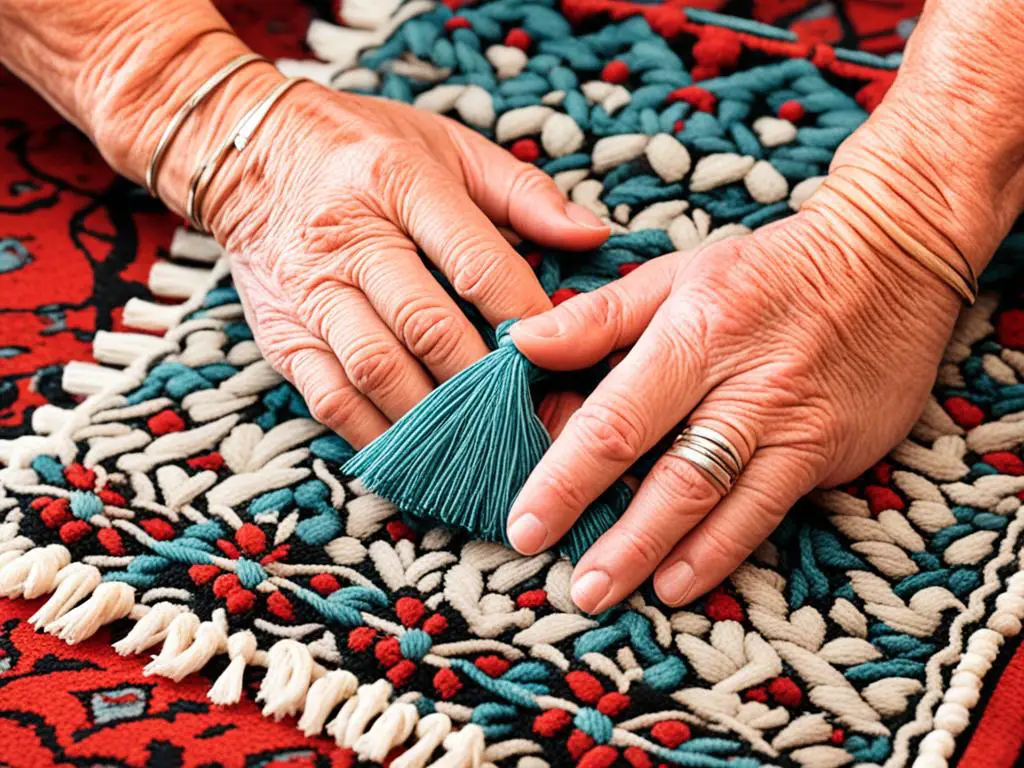
Conclusion
In summary, the knot count of a rug, also known as knot density, is an important factor in determining its quality and value. Higher knot counts generally indicate finer craftsmanship, as more knots per square inch contribute to the intricate design and overall durability of the rug.
However, it’s crucial to consider other factors as well, such as the materials used, design intricacy, and overall appeal. While a high knot count is desirable, it should not be the sole determining factor when purchasing a rug.
Ultimately, the best rug for you is one that you love and that fits your personal aesthetic and design preferences. Whether it’s a rug with a high knot count or a more simplistic design, choose a rug that brings joy to your space and enhances your overall decor.
